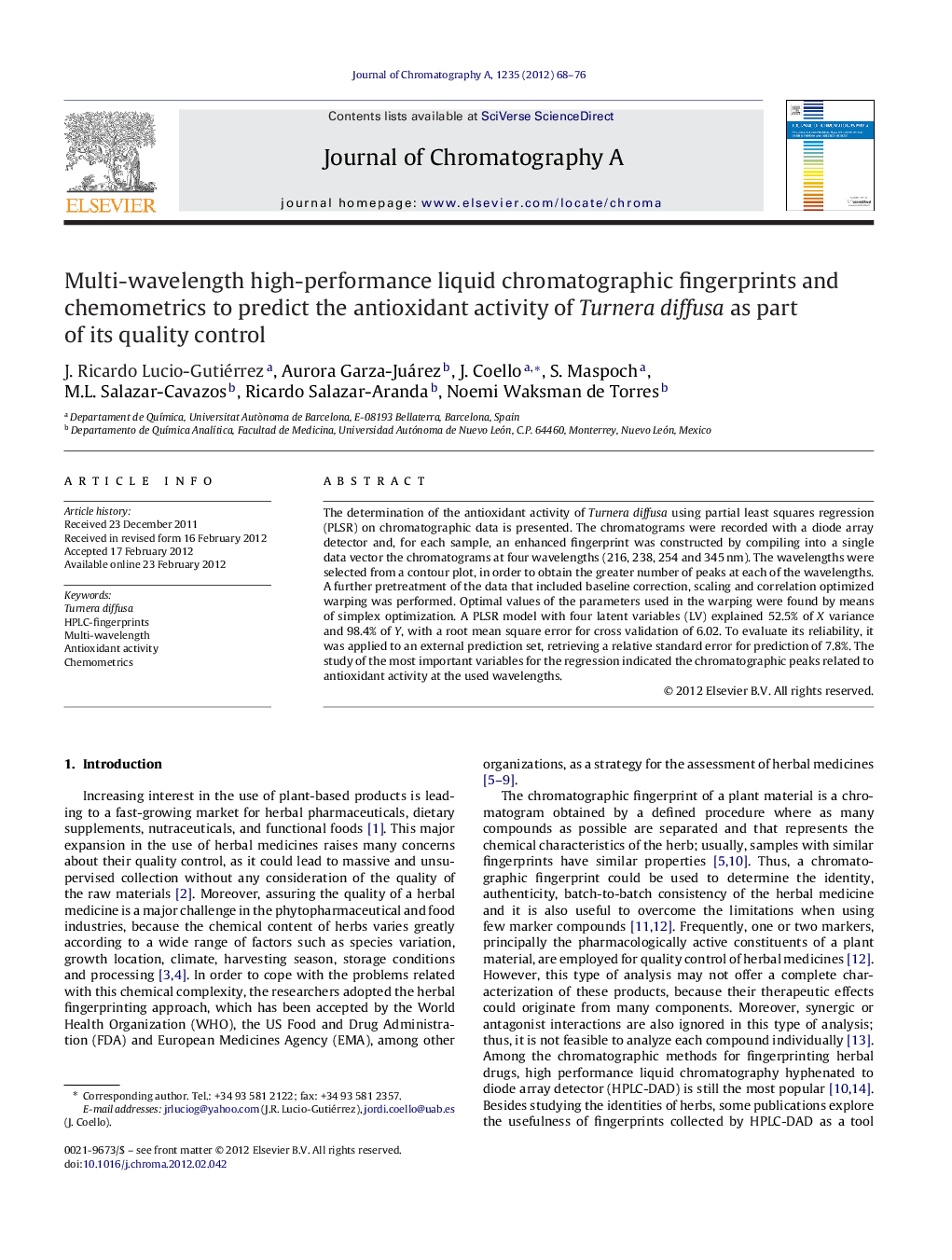| Article ID | Journal | Published Year | Pages | File Type |
|---|---|---|---|---|
| 1202622 | Journal of Chromatography A | 2012 | 9 Pages |
The determination of the antioxidant activity of Turnera diffusa using partial least squares regression (PLSR) on chromatographic data is presented. The chromatograms were recorded with a diode array detector and, for each sample, an enhanced fingerprint was constructed by compiling into a single data vector the chromatograms at four wavelengths (216, 238, 254 and 345 nm). The wavelengths were selected from a contour plot, in order to obtain the greater number of peaks at each of the wavelengths. A further pretreatment of the data that included baseline correction, scaling and correlation optimized warping was performed. Optimal values of the parameters used in the warping were found by means of simplex optimization. A PLSR model with four latent variables (LV) explained 52.5% of X variance and 98.4% of Y, with a root mean square error for cross validation of 6.02. To evaluate its reliability, it was applied to an external prediction set, retrieving a relative standard error for prediction of 7.8%. The study of the most important variables for the regression indicated the chromatographic peaks related to antioxidant activity at the used wavelengths.
► Antioxidant activity is determined using PLSR and multi-wavelength fingerprints. ► PCA was used to find out possible relationships among PCs and antioxidant activity. ► The constructed PLSR model with four latent variables explained 98.4% of Y variance. ► An external sample set obtained a relative standard error for prediction of 7.8%. ► Compounds related to the antioxidant activity can be indicated using the PLSR results.
